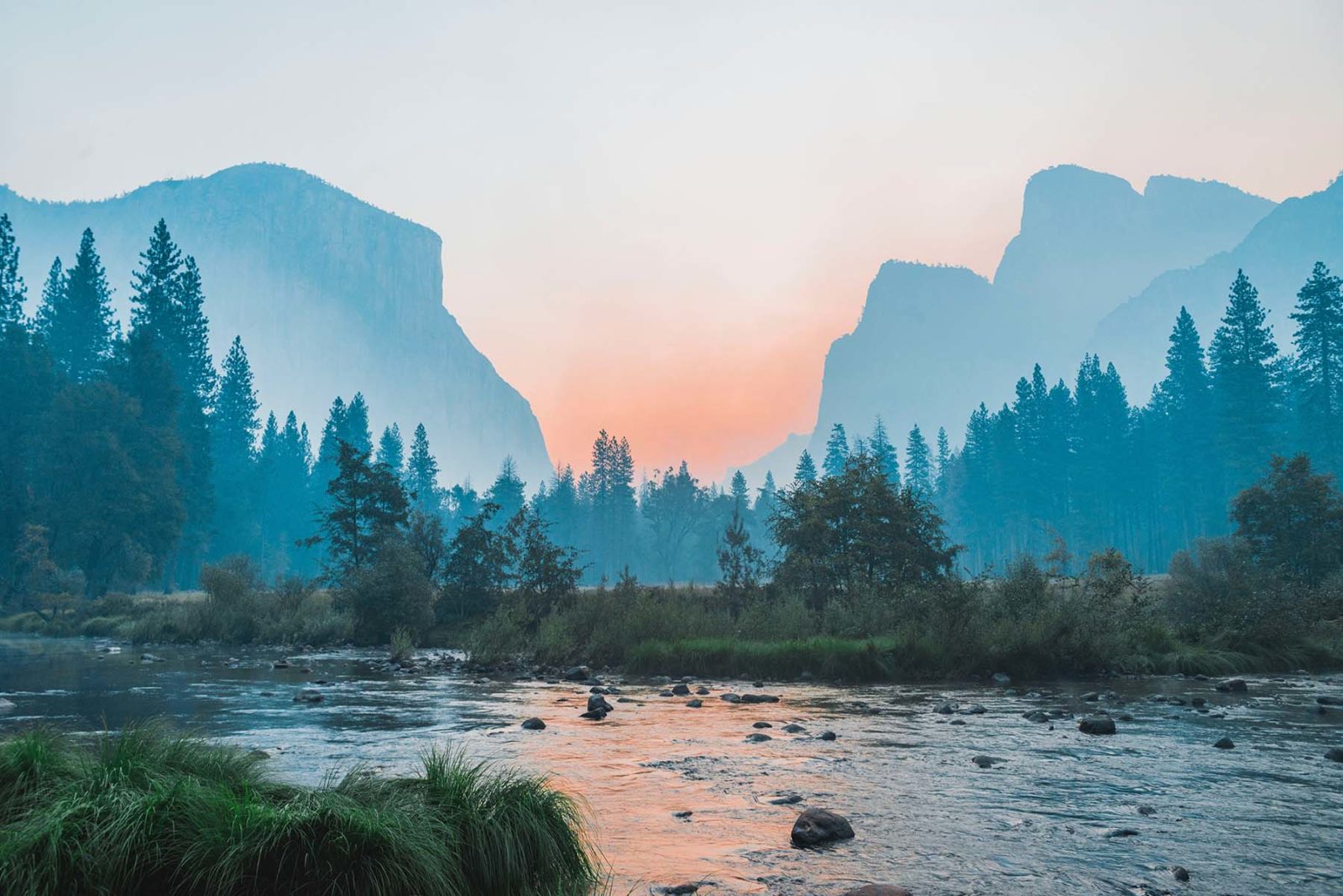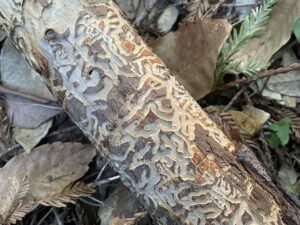Wildfires have become larger, more frequent, more severe, and more destructive to human life and property in many ecosystems in California in recent decades. If you’ve lived in California for a while, it might feel like this has suddenly become one of the biggest problems facing the state, and perhaps even a reason to leave. As fire ecologists, we are often asked about the causes and consequences of the challenges we face with fire, and below we answer some common questions.
Why is there so much wildfire in California today?
Humans often try to look for simple explanations for patterns, but there is no one, simple explanation for the recent increases in fire size and intensity we have experienced in California. The main causes of the changes in wildfire patterns in recent years include historical fire suppression (the exclusion of fire from ecosystems where it would otherwise occur), climate change (which can cause longer fire seasons, more fire weather, and drier, more flammable woody fuels), and historical timber harvest that altered forest structure (especially the removal of large, fire-resistant trees). Further, the substantial increase in human settlement in fire-prone areas over recent decades is the primary reason that fires are causing more property damage than they have historically, and increased human populations also increase the number of fire ignitions.

How bad are the problems we face with fire from an ecological perspective?
Most terrestrial ecosystems in California are adapted to fire, and more total area burned doesn’t necessarily mean more negative impacts of fire. We are all familiar with the negative social effects of fire, but fire can have both positive and negative ecological effects. Almost all terrestrial ecosystems in California can benefit from certain kinds of fire. Many people are surprised to learn that more area burned in California each year before European colonization than has burned in recent years, even with the increases in burn area we have experienced recently. But the kind of fire that we are experiencing now — larger fires, with larger areas that burn at high intensity and kill most trees — is different from the typically small, low-intensity fires set by Indigenous people over previous millennia. Nonetheless, even the largest fires of the modern day typically have some positive ecological effects. For example, fires that burn in low- to mid-elevation conifer forests typically contain some areas that burn at low severity, and in these areas fire has largely positive ecological effects.
Is climate change the main cause of the increase in wildfires in California?
There is strong evidence that climate change is one major cause of shifts in fire behavior that we have seen recently. California naturally has highly variable annual precipitation, with years of intense drought and years with multiple heavy storms. Climate change is accentuating this variability, causing longer and more severe droughts that alternate with periods of intense precipitation. Higher temperatures increase evaporation, causing plants to experience stress from both excess heat and dryness. Warmer temperatures and dry conditions in winter lengthen the fire season. Warmer, drier conditions also dry out woody fuels faster, making landscapes more flammable.
Nonetheless, even in the absence of climate change, California would still be facing major challenges with fire — and we would still be seeing fires become increasingly destructive.
In recent decades, the number of houses built in highly flammable wildland-urban interface areas has increased dramatically, and this is one of the primary reasons that property damage caused by fires has increased in recent years. California has relatively weak building codes with regard to fire resistance compared to other fire-prone regions of the world. Transitioning to more fire-resistant construction will undoubtedly be a necessary part of learning to live with frequent wildfires.
Will more logging reduce fire risk?
It depends on what logging practices are used. Historically, industrial timber harvest has removed the largest — and most valuable — trees from the landscape. Large trees have thick bark that makes them more fire resistant than small trees, so removing large trees typically increases the flammability of a landscape; more flammable fuels, like brush and small trees, grow back quickly after large trees are removed. Losing the old growth trees in most western forests has certainly contributed to the more severe fires we see in some ecosystems today, relative to the kinds of fires that were typical prior to European colonization. Commercial timber harvest practices that remove the largest trees from the landscape are not likely to reduce the flammability of vegetation.
That said, forest management does play a critical role in addressing the challenges we face with fire in the West today. Native people have been using fire to steward many California ecosystems for thousands of years, until European settlers forcibly removed Native people and fire from most of their lands over 100 years ago. In some, but not all, ecosystems, this removal of fire led to denser stands of trees, and allowed woody fuels to build up, ultimately contributing to increases in fire severity that we have observed in recent years. In forests that have become denser because of fire suppression, thinning stands by removing small trees can substantially reduce the severity of future fires. But thinning small trees is not always a profitable enterprise–in some cases, ecological thinning projects may cost more to conduct than the timber value they generate. Any material that is cut either must be burned in place or removed and taken somewhere, such as a sawmill or a biomass power plant. For many forested regions, however, the nearest mill or biomass plant is a long and expensive drive away. The collapse of sawmills is a story for another time.

Why do forest managers sometimes intentionally burn forests?
Native tribes have been skillfully burning landscapes in the West for thousands of years to benefit game animals and traditional food and basketry plants, and to maintain an open landscape for travel and protection from wildfires. To many Native peoples, the biggest fire-related risk is the negative effects caused by the absence of fire. Cultural fire — the skilled, intentional use of fire, led by Native fire practitioners — is critical for preserving many Native communities and cultures and caring for the land. Although European settlers largely removed Native tribes from most of their lands, some tribes persisted with fire stewardship, and there is now broad recognition among land managers and ecologists that intentionally setting fires can be a critically important forest management tool. Another form of intentional burning, prescribed fires are typically used to achieve ecological objectives (e.g. encourage fire-dependent vegetation), reduce fuel loads, or both. Prescribed fire is highly cost-effective for reducing the abundance of woody fuels across large areas of land while providing additional benefits to biodiversity. Both cultural fire, which follows the leadership of Indigenous fire practitioners, and prescribed fire, which often burns at a larger scale, are essential for addressing the challenges we currently face with fire.
Along with instituting prescribed fire, for about the last 50 years land managers have allowed some wildfires to burn in certain places and under certain conditions. This typically occurs in more remote areas within National Parks and National Forests, far from human settlements, when there is little wind and the fire is not expected to exhibit extreme behavior. The decision to manage fire, rather than to suppress it, is complicated, incorporating the location, weather conditions, topography, and firefighter availability and safety. Allowing fires to burn can have substantial benefits, such as increasing forest resilience to fire and drought, and reducing the severity of a future wildfire that may occur under more extreme weather conditions. While there is some risk involved in managed fire — for example if weather conditions change suddenly — managed wildfire is an essential management option for remote areas where prescribed fire or mechanical thinning may not be feasible. Since almost all landscapes will inevitably burn eventually, allowing fires to burn when conditions are mild can be less risky than a full fire suppression policy. Full fire suppression will eventually fail when extreme fire weather occurs, potentially resulting in less ecologically beneficial fire than a managed fire under mild conditions.
The best example of an area with a full return of wildfire is the Illilouette Creek Basin in Yosemite National Park, where almost all lightning-ignited fires have been allowed to burn since the 1970s. The Illilouette Creek Basin has seen a remarkable increase in biodiversity and water availability, with lessened water stress for trees in the basin and an increase in downstream water flow. This is a great example of “good fire”– a term used to recognize the beneficial effects fire can have.
What can I do to help address the challenges we face with fire in California?
We’re so glad you asked! There are a variety of ways that you can be engaged, and in our experience, involvement may help stave off feelings of helplessness that creep up as we read the news about fire and see the smoke that settles over us.
Everyone can help by advocating for good fire policies. If you can vote, elect leaders who care about good fire and the protection of the most vulnerable. Reach out to community leaders and legislators to tell them that this is a priority. Advocating for broader use of prescribed fire is one important step anyone can take to help create a future where we have a better relationship with fire.
If you live in the wildland-urban interface, you may have some work cut out for you. Hardening your home to fire is critical for anyone who lives in an area with fire danger. Not all of the tasks are expensive or time-consuming, so make an action plan, and follow up multiple times per year with things like cleaning gutters and raking leaves away from the area against your house. Be especially sure to focus on the roof and vents of the house, and vegetation nearest the home. Many guides exist to help you, from the National Fire Protection Association to state and local groups. In California, UC Cooperative Extension has great info, and you can look for a county or city FireSafe Council for guidance and resources. Nevada’s Living with Fire program has a lot of relevant information for the eastern Sierra and Tahoe Basin in addition to Nevada. And Oregon’s extension fire program has great info too.
If you are interested in participating in a prescribed fire yourself — yes, that’s an option! — look for a local Prescribed Burn Association. These are organizations that build community capacity for implementing prescribed burns by training local people and organizing local landowners who want their land treated. Getting involved with good fire is an incredible way to reshape your relationship with fire and build community.





